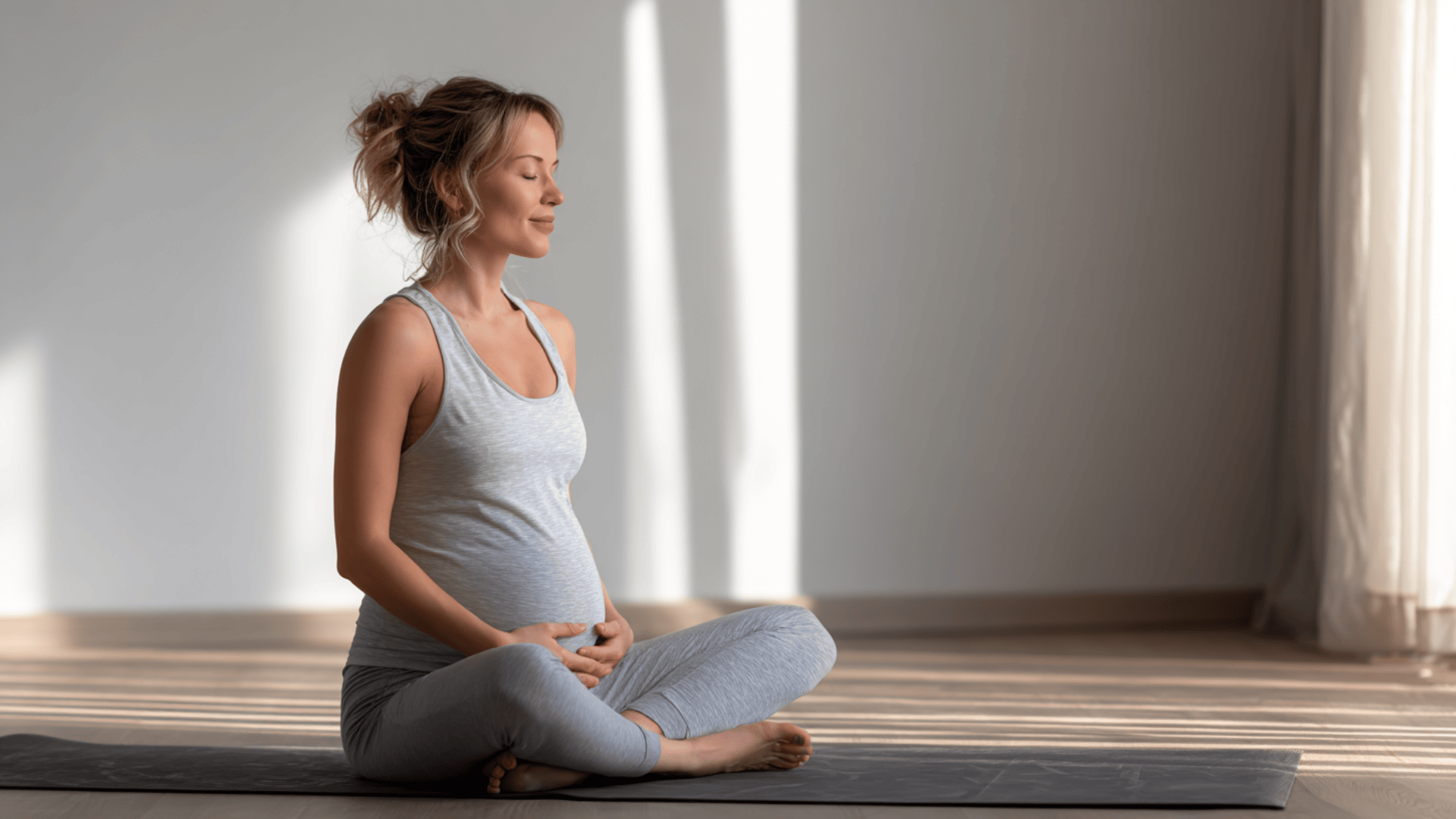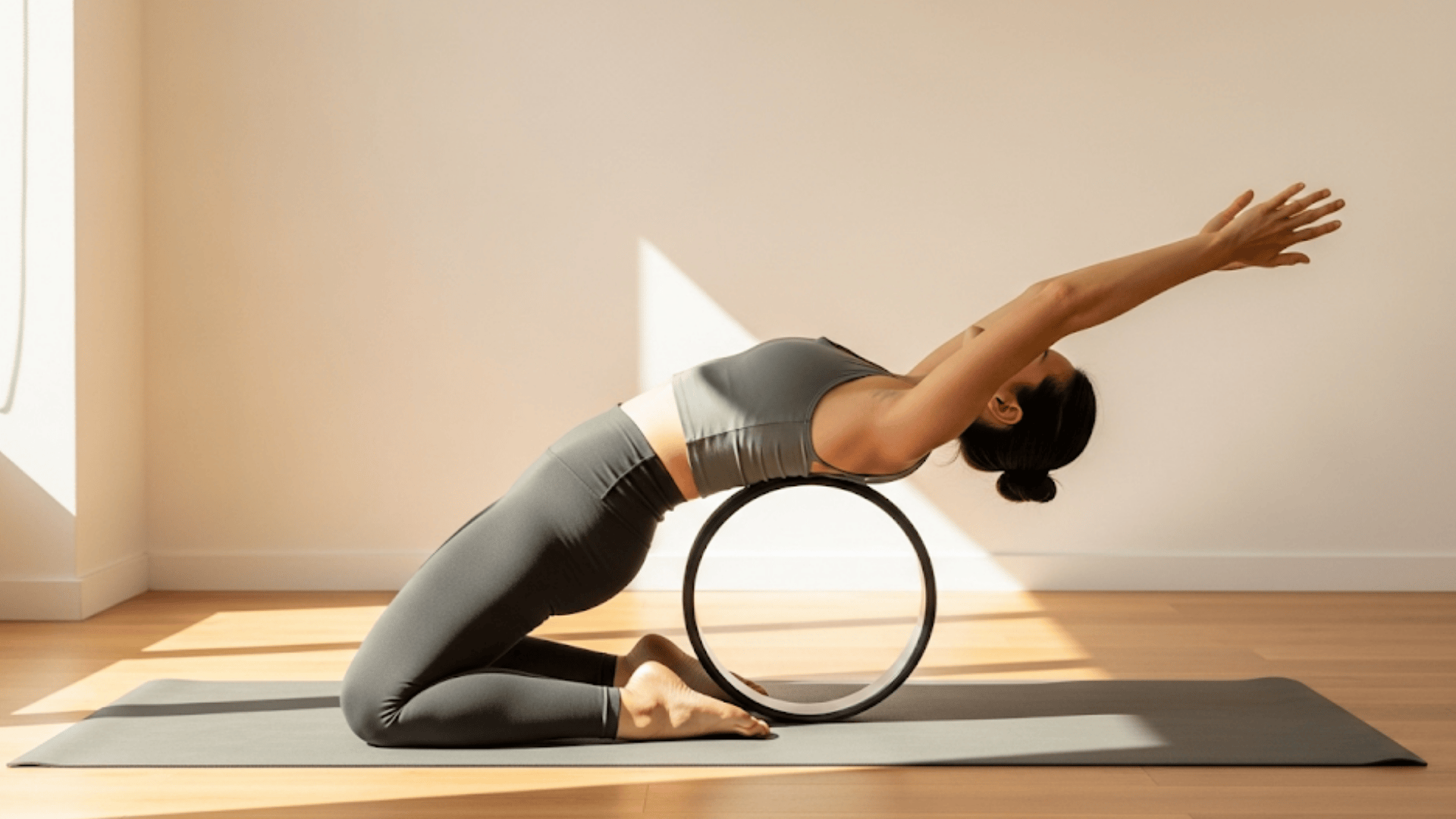Pregnancy brings joy, but also back pain, fatigue, and weight concerns that leave many moms-to-be feeling overwhelmed and uncomfortable.
What if staying active during pregnancy could actually reduce these common discomforts while preparing your body for an easier delivery?
Prenatal fitness isn’t just about staying in shape; it’s also about maintaining a healthy lifestyle. It’s your key to managing pregnancy symptoms, boosting energy levels, and building strength for labor.
The right exercises can help prevent complications, improve your mood, and promote better sleep. You’ll feel more confident and connected with your changing body throughout this special time.
Ready to feel your best during pregnancy? Let’s explore safe and effective exercises designed for each trimester that will keep you healthy, strong, and well-prepared for motherhood.
What is Prenatal Fitness and Why is it Important?
Staying active during pregnancy isn’t just about staying fit; it’s about feeling good and giving your baby a healthy start.
Prenatal fitness encompasses physical activities and exercises specifically designed for pregnant individuals to maintain health, strength, and well-being throughout pregnancy.
It includes a range of low-impact workouts tailored to support the changing body, often focusing on core stability, pelvic floor health, and preparation for labor.
Benefits of Prenatal Fitness
Engaging in regular prenatal exercise offers numerous advantages for both mother and baby:
- Reduces common discomforts like back pain, constipation, swelling, and fatigue.
- Helps manage weight gain and lowers the risk of complications such as gestational diabetes (by up to 76%), preeclampsia (by 54%), and preterm birth (by 38%).
- Improves energy levels, sleep quality, mood, and stress management.
- Strengthens muscles for easier labor, potentially shortening delivery time and aiding postpartum recovery.
- Enhances cardiovascular health, blood flow, and endurance, which can reduce the need for C-sections (by 20%) and lower risks of postpartum depression (by 67%).
- Boosts overall confidence and body connection, empowering women through pregnancy transitions.
Best Exercises for Prenatal Fitness: Trimester by Trimester
Your body undergoes significant changes during pregnancy, so your workouts need to adapt accordingly.
Below is a detailed breakdown of the best exercises for each trimester, accompanied by step-by-step guidance, benefits, and safety tips to ensure effectiveness.
First Trimester Exercises
The first trimester can feel like a rollercoaster with nausea, fatigue, and mood swings.
Your goal here is to ease into exercise with gentle, low-impact moves that build a foundation without overwhelming you. These activities are perfect for adjusting to pregnancy while keeping you active.
1. Brisk Walking
- What to do: Lace up comfy sneakers and aim for a 20-30 minute walk at a pace where you can talk but feel your heart rate pick up slightly (about 3-4 mph). Choose flat paths or a treadmill for ease.
- Why it’s great: Walking boosts blood flow, lifts your mood, and fights fatigue without stressing your joints. It’s also extremely accessible, with no fancy equipment required.
- How to do it safely: Wear supportive shoes to avoid foot pain. If nausea hits, slow your pace or shorten your walk. Stay hydrated and avoid hot, sunny areas to prevent overheating.
Pro tip: Try walking with a friend or listening to a fun podcast to make the experience more enjoyable. Start with 10 minutes if 20 feels like too much.
2. Restorative Yoga
- What to do: Focus on gentle poses like child’s pose (kneel, sit back on heels, stretch arms forward), cat-cow (alternate arching and rounding your back on all fours), or seated forward bends. Aim for 15-20 minutes, 2-3 times a week, following a prenatal yoga video or class.
- Why it’s great: These poses stretch tight muscles, ease lower back tension, and calm your mind, which is a lifesaver for first-trimester stress. They also help with breathing, which is key for labor later on.
- How to do it safely: Avoid deep twists or poses that compress your belly. Use a yoga mat for grip and a pillow for comfort. If you feel lightheaded, sit down and rest.
Pro tip: Look for prenatal yoga classes (online or in-person) to ensure poses are pregnancy-safe. A bolster or blanket can make poses even cozier.
These exercises are ideal for building a routine while your body adjusts. Start slow, keep sessions short, and focus on consistency over intensity.
Second Trimester Exercises
By the second trimester, that energy boost might have you ready to step things up—woo-hoo! This is a great time to add strength and balance exercises, but you’ll still want to keep things low-impact to protect your growing belly. Here’s how to make the most of it.
1. Prenatal Pilates
- What to do: Try modified side planks (prop on one forearm, knees bent, lift hips slightly) or pelvic tilts (lie on your back with knees bent, gently tilt pelvis upward). Aim for 10-15 reps per move, 2-3 sets, 2-3 times a week. Follow a prenatal Pilates video for guidance.
- Why it’s great: Pilates strengthens your core, pelvic floor, and back, which helps with posture as your belly grows. It also improves stability, reducing the risk of falls.
- How to do it safely: Avoid lying flat on your back for too long, and use a wedge or pillow to prop up your upper body. Skip moves that overstretch your abs to prevent diastasis recti. If you feel strain, reduce reps or rest.
Pro tip: A fitness ball can add support for moves like pelvic tilts. Join a prenatal Pilates class for expert guidance and community vibes.
2. Barre Workouts
- What to do: Try small, controlled movements like pliés (gentle squats with feet turned out) or leg lifts while holding a chair for balance. Follow a prenatal barre class for 20-30 minutes, 2-3 times a week.
- Why it’s great: Barre combines light cardio, toning, and stretching to keep you strong and balanced. It’s low-impact but still gives you a solid workout for your legs and glutes.
- How to do it safely: Avoid deep squats or high kicks that strain your hips. Use a sturdy chair or barre for support to prevent wobbling. Stop if you feel unsteady.
Pro tip: Barre classes (online or in-person) are super fun with music. Wear grippy socks to avoid slipping.
Be mindful of diastasis recti, avoid crunches or intense ab work that could cause your abdominal muscles to separate. Props like chairs or fitness balls are your best friends for support.
Third Trimester Exercises
In the third trimester, your belly’s bigger, and labor’s just around the corner. Focus on exercises that strengthen your pelvic floor, open your hips, and keep you comfy despite any aches. Go easy—your body’s doing a lot!
1. Kegels
- What to do: Sit or stand comfortably, squeeze your pelvic floor muscles (like stopping the flow of urine) for 5-10 seconds, then release. Aim for 10-15 reps, 2-3 times a day. You can do these anywhere—while watching TV or brushing your teeth!
- Why it’s great: Kegels strengthen your pelvic floor, which supports your bladder, uterus, and bowels. This can make delivery easier and reduce postpartum issues like incontinence.
- How to do it safely: Don’t overdo it—too many Kegels can tire out your muscles. Make sure you’re targeting the right muscles (not your butt or thighs). If you feel pain, stop and consult your doctor.
Pro tip: Pair Kegels with deep breathing to relax and focus. Apps like Kegel Trainer can remind you to practice daily.
2. Stationary Biking
- What to do: Use a stationary bike at a moderate pace for 15-20 minutes, 2-3 times a week. Adjust the seat for comfort and keep the resistance light to medium.
- Why it’s great: Biking keeps your heart healthy and strengthens your legs without jarring your joints or pelvis. It’s perfect for staying active even with a bigger belly.
- How to do it safely: Keep the handlebars within easy reach for balance. Stop if you feel pelvic pressure or shortness of breath. Stay hydrated and take breaks as needed.
Pro tip: Pop on some music or a show to make biking more fun. Many gyms offer prenatal spin classes for extra guidance.
3. Hip Openers
- What to do: Try supported squats (hold a chair, lower slowly, keep knees behind toes) or lunges with a yoga ball (rest one hand on the ball, step forward gently). Do 8-10 reps per move, 2 sets, 2-3 times a week.
- Why it’s great: These moves open your pelvis and strengthen your thighs and glutes, which can ease labor and delivery. They also help with back and pelvic pain.
- How to do it safely: Always use support (chair, wall, or ball) to avoid falling. Don’t squat too deep if it feels uncomfortable. Stop if you feel sharp pain or contractions.
Pro tip: Pair hip openers with slow, deep breaths to prep for labor. A prenatal yoga video can guide you through safe variations.
Back pain or pelvic pressure? Use props like a yoga ball or chair, and don’t push through discomfort. Your body’s working overtime, so give it some grace.
Top Prenatal Fitness Activities and Their Benefits
Here’s a quick look at the best activities and why they’re perfect for pregnancy:
|
Activity |
Why It’s Great |
Best For |
|---|---|---|
|
Walking |
Easy, boosts mood, improves circulation |
All trimesters |
|
Swimming |
Supports your weight, reduces swelling |
First & second |
|
Prenatal Yoga |
Improves flexibility, helps with labor breathing |
All trimesters |
|
Strength Training |
Builds endurance, prevents back pain |
Second trimester |
|
Water Aerobics |
Gentle on joints, keeps you cool |
Third trimester |
Try 10-15 reps for strength exercises or 20-minute sessions for cardio. Grab a yoga ball or resistance band for extra support and comfort.
Safety Precautions and Exercises to Avoid During Pregnancy
Safety first, always! Exercise is great, but stop immediately if you feel dizzy, experience chest pain, notice bleeding, or feel contractions. Call your doctor promptly. If your baby’s moving less than usual, that’s a sign to pause and check in, too. Here’s what to skip:
-
Lying flat on your back after the first trimester (it can press on major veins).
-
High-risk stuff like contact sports, skiing, or horseback riding (fall risks).
-
Hot yoga or saunas (overheating isn’t safe for you or your baby).
-
If you’re not used to heavy lifting, stick to light weights or bodyweight moves. Got a high-risk pregnancy, like multiples or preeclampsia? Your doctor might recommend rest instead, so always follow their advice.
Popular Prenatal Fitness Programs and Resources
Ready to get started, but not sure where? There are tons of great programs out there. Here are some top picks:
-
Nourish Move Love: Free trimester-specific workouts with yoga, barre, and strength training. Perfect for active moms.
-
MamasteFit: On-demand 30-40 minute sessions focusing on birth prep and core health. Great for home or gym.
-
The Bloom Method: Quick 15-20 minute daily workouts, tailored for each trimester and pelvic floor strength.
-
Expect fit: OB/GYN-approved streaming with Pilates, strength, and pelvic floor rescue plans.
-
FIT4BABY: A 6-week group program with full-body workouts and community support. You can also try apps like Obé or Aaptiv for yoga, HIIT, and more; many offer free trials. Check YouTube for free prenatal workout videos if you’re on a budget.
Final Thoughts
Prenatal fitness transforms how you experience pregnancy. From gentle walks in your first trimester to pelvic floor exercises before delivery, each workout builds strength for the months ahead. Your body adapts, your energy improves, and labor preparation becomes part of your daily routine.
Remember, every pregnancy is different. Listen to your body, follow your doctor’s advice, and choose activities that feel right for you. Whether it’s swimming, yoga, or simple stretches, consistency matters more than intensity.
What’s your next step? Start small today. Take a 10-minute walk, try some prenatal yoga poses, or sign up for a pregnancy fitness class. Your future self will thank you for taking action now.








